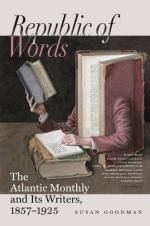“Upon paper gilt-edged, without
blot or erasure
Then sanded it over with silver and azure.”
Among the remaining letters in this collection we find some from John Gray, “teacher of mathematics in Cupar of Fife,”—some from Dr. John Armstrong, the author of “The Art of Health,”—and one from George Colman the elder. In 1761, Gray writes to Smollett, thanking him for kind notices in the “Critical Review,” and asking his influence in regard to certain theories concerning the longitude, of which Gray was the inventor. In 1770, Colman thus writes:—
GEORGE COLMAN TO DR. SMOLLETT.
“Dear Sir,—I have some idea that Mr. Hamilton about two years ago told me he should soon receive a piece from you, which he meant, at your desire, to put into my hands; but since that time I have neither seen nor heard of the piece.
“I hope you enjoy your health abroad, and shall be glad of every opportunity to convince you that I am most heartily and sincerely, dear Sir, your, &c.,
“G. COLMAN.
“London, 28 Sept. 1770.”
* * * * *
The piece referred to here by Colman (who was at this period, we believe, the manager of the Haymarket Theatre) may possibly have been a farce that was brought out fifteen years later on the Covent-Garden stage, with the title of “The Israelites, or the Pampered Nabob.” Its merits and its success are said by Scott to have been but slight, and the proof of its having been written by Smollett very doubtful; so that it was never printed, and was soon forgotten.
At this time, (1770,) it must be remembered, Smollett was established at Leghorn, where a milder climate and sunnier skies tended to promote, we fancy, a serener condition of mind than he had known for years. In leaving England, he left behind him some friends, but many enemies. In his literary career, as he himself had not been over-merciful, so he was in return not always tenderly handled. As a sample of the invective which was occasionally poured forth on him, we will quote some lines from “The Race,” a dull imitation of “The Dunciad,” ascribed to one Cuthbert Shaw, and published in 1766. Although reprinted in “Dilly’s Repository,” (1790,) it has long ago been very properly forgotten, and is now utterly worthless save for purposes of illustration. The Hamilton referred to is the same person to whom Colman makes allusion; he was indeed Smollett’s fidus Achaies.




